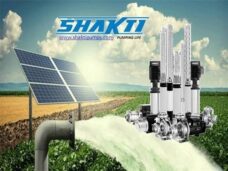Highlights :
- The major companies can withstand the pressures of rising materials costs and surging interest rates.
- Supply chain disruptions, implementation of trade barriers and a tightening monetary policy pose fresh challenges for renewable energy companies.

A new report by the Institute for Energy Economics and Financial Analysis (IEEFA) says that large developers in the renewable energy sector have enough options to boost returns even as challenges mount and will fight aggressively in the various auctions scheduled in 2022 in India. The report comes even as the industry is going through one of its most challenging periods, with large developers trying to manage the twin pressures of higher import duties and the enforcement of the ALMM list for almost all solar projects.
The report says that falling costs of solar modules, which in turn brought down tariffs, fuelled the growth of India’s renewable energy growth story. However, turmoil in global supply chains caused by the COVID-19 pandemic and the Russia-Ukraine war has pushed up costs. Further, the period of lower financing costs is also fast ending as surging inflation forces central banks to tighten monetary policy, pushing up interest rates.
IEEFA holds that challenges are unlikely to have a lasting impact on India’s renewable energy story. “We believe India will be able to continue its renewable energy capacity addition trajectory because current supply chain challenges will ease in the short-to-medium term, and the industry has enough cushion to absorb these downside risks,” says the co-author of the report, Shantanu Srivastava, Energy Finance Analyst, IEEFA. A strong pipeline of already auctioned projects should also help.
Ankur Saboo, co-author of the report, maintains, “Central and state nodal agencies should proceed with their pipeline of renewable energy auctions, given that interest from the large companies in the sector should continue, even in these unprecedented times.” The report highlights various options that large renewable energy companies have to enhance their return on equity, which would help them tackle the challenges.
According to Srivastava and Saboo, large renewable energy developers can lean on bond markets to refinance debt at lower rates and take advantage of a non-amortisation period on debt repayments to manage their auction wins. This leads to the front loading of equity returns.
The report adds further, margins on in-house engineering, procurement and construction (EPC) provide a kicker to returns. The sale of stakes in operational projects to strategic investors such as global oil & gas majors and financial investors like infrastructure investment trusts (InvITs) is another avenue developers have used to increase returns.
Finally, the selling of carbon credits to developed economies is increasingly considered a viable source of additional income for developers, further enhancing their returns.
The report analyses how these measures can help a solar power project and a hybrid wind-solar power project won at auctions enhance their equity returns. It finds that refinancing at a 100 basis point lower rate of interest can help add 2% to a hybrid wind-solar power project’s equity internal rate of return (IRR).
IEEFA says that bond market refinancing, which has a non-amortising period of five years, can help add another 2% to the equity IRR, in-house EPC can add up to 6%, and selling operational assets can add 4%. Also, revenues from carbon credit trading can add 3% to the equity IRR taking the total upside potential to 17%, over and above the baseline returns.
The reports prognosis seems to be borne out going by the response and bids at the most recent auctions, which have belied fears by attracting bids at prices closer to those prevailing a few months back. Importantly, elevated prices of India’s energy mainstay so far, coal also mean more space for renewables even at prices that are 10-15% higher than those prevailing pre-pandemic even.






























